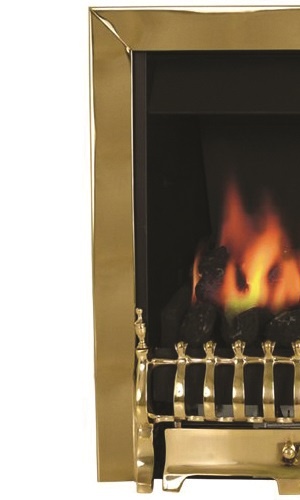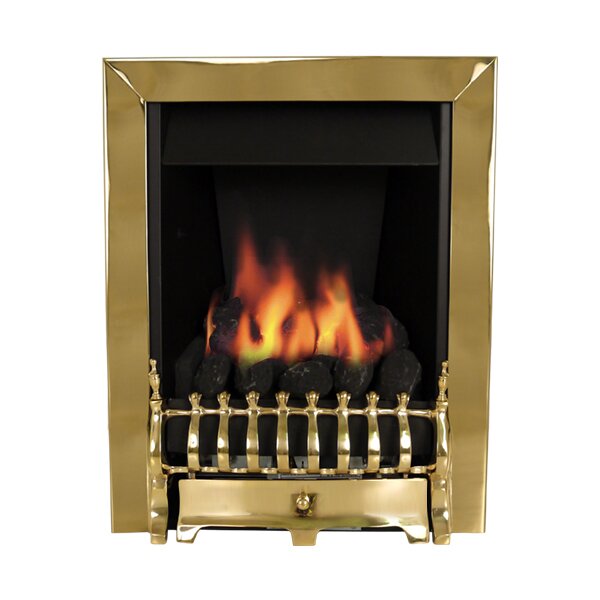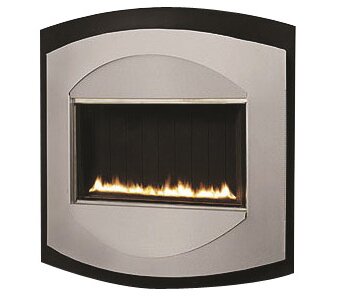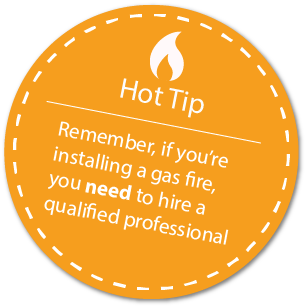
Gas Fire Guide

You really want that real flame effect, but don’t want to go all on out on a solid fuel fire? Well a gas fire is the perfect middleman for a realistic fire that isn’t difficult to maintain.
Gas fires work by a process known as combustion. Basically, natural gas combines with oxygen, that when ignited creates heat and light. The process also produces carbon monoxide, which can be deadly if the fire is not properly installed. It is therefore very important that your home is surveyed and fire installed by a registered gas installer.
Click here to see our guide on understanding your flue type.
Generally speaking, gas fires are slightly more expensive than electric, and always require installation (as opposed to our plug in and enjoy electric suites.) On the plus side however they are compatible with many more flue types than a solid fuel fire, making it easy for any home to have a luxurious real flame fire.
Pros and Cons
Pros:
-
Real flames.
-
No fan means silent operation.
-
High heat output.
-
Unlike solid fuel fires, an instant On/Off switch.
-
Good durability.
-
Variable heat settings.
-
Cleaner and easier to maintain than solid fuel.
-
More installation options compared to solid fuel.
Cons:
-
Not as efficient as an electric fire.
-
Higher running costs.
-
Installation time/cost.
-
Safety risks if not installed properly.
Models

Full Depth/Slimline Insets
Full depth and slimline basically refer to our inset gas fire's depth. Our full depth inset fires are 270mm, meaning a much larger grate than the slimline which is 115mm. Full depth fires are ideal for getting the most out of the gas fire flames, however due to their larger size they cannot fit in all cavities.
 Wall Mounted
Wall Mounted
As well as our inset fires, we also offer gas wall mounted varieties. Generally speaking, These are a lot more contemporary then our insets, and are not only stylish but also very economical with space. Care must be taken however as their flue and ventilation requirements differ from product to product. Always check the specifications, and if unsure contact us.
Health & Safety
As with many other gas applications, a by product of a gas fire's combustion process is carbon monoxide - an invisible, odourless gas that can be deadly in large quantities.
To ensure your safety it is vital that your gas fire is installed by a Gas Safe Registered Fitter, and that it is fully compatible with your home's flue type (
see our article on identifying flues for guidance).
The Danger Signs
Carbon monoxide may be present if there are any of the following danger signs:
-
Gas flames that normally burn blue burn orange or yellow instead.

-
Condensation on windows and cool surfaces.
-
Sooty stains appear on or just above appliances, regardless of the fuel being burnt.
-
Coal or wood fires burn slowly or go out.
-
The fire is difficult to light.
-
The room is not properly ventilated.
-
The chimney or flue is blocked - watch out for smoke in the room.
-
You develop the following unexplained symptoms:
- tiredness
- drowsiness
- headaches
- dizziness
- chest pains
- nausea
Carbon monoxide symptoms are similar to flu, food poisoning, viral infections and simply tiredness. That’s why it’s quite common for people to mistake this very dangerous poisoning for something else.
Other signs that could point to carbon monoxide poisoning:
-
Your symptoms only occur when you are at home.
-
Your symptoms disappear or get better when you leave home and come back when you return.
-
Others in your household are experiencing symptoms (including your pets) and they appear at a similar time.
What Should I Do If I Experience Any Symptoms of Carbon Monoxide Poisoning?
Get fresh air immediately. Open doors and windows, turn off gas appliances and leave the house.
See your doctor immediately or go to hospital - let them know that you suspect carbon monoxide poisoning. They can do a blood or breath test to check .
If you think there is immediate danger, call the
Gas Emergency Helpline on 0800 111 999.
How Can Carbon Monoxide Poisoning be Avoided?
Carbon monoxide poisoning can be avoided by having the gas fire and flue serviced at least once a year. This needs to be done by a qualified Gas Safe registered fitter.
Installation of the fire and surround needs to be done by a qualified fitter. Any ventilation aids e.g. air bricks, should be used and installed correctly and not covered.
A carbon monoxide sensor should also be placed in the room - this is highly recommended with flueless gas fires.







